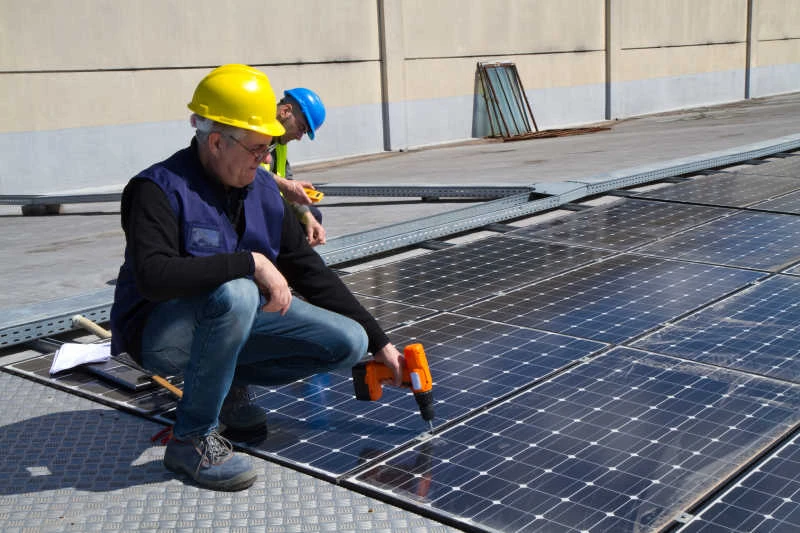Optimal Energy Solutions with Southeast Facing Solar Panels for Maximum Sunlight Capture
The Advantages of South-East Facing Solar Panels
In the pursuit of sustainable energy solutions, solar panels have emerged as a prominent choice for homeowners and businesses alike. The orientation of solar panels is crucial for maximizing their efficiency and output, with south-east facing panels offering a unique advantage. This article delves into the benefits of south-east facing solar panels, their optimal performance characteristics, and considerations for potential adopters.
Understanding Solar Panel Orientation
Solar panels generate electricity by converting sunlight into energy. The angle and direction in which they are installed greatly influence their effectiveness. In the Northern Hemisphere, south-facing panels typically receive the most sunlight throughout the day due to the sun's trajectory. However, south-east facing panels can also deliver impressive results, especially during specific times of the day.
Optimal Performance of South-East Facing Panels
1. Morning Sunlight Exposure One of the primary benefits of south-east facing solar panels is their ability to capture sunlight during the morning hours. For homes and commercial buildings that operate mainly during the day, this orientation can lead to increased energy production right when it is most needed. The panels can harness the abundant morning light before the sun moves overhead, resulting in higher energy yields.
2. Balanced Energy Production While south-facing panels can be highly effective, south-east facing panels can provide a more balanced energy output throughout the day. This is particularly beneficial for regions where peak electricity demand occurs in the early hours. Homeowners can enjoy a steadier flow of energy consumption without relying heavily on the grid during peak hours.
3. Reduced Heat Stress Solar panels tend to heat up when exposed to excessive sunlight. Placing panels in a south-east orientation can help mitigate this problem. By avoiding direct exposure to the harsh afternoon sun, south-east facing panels can maintain a lower operating temperature, which can enhance their overall efficiency and longevity. Cooler panels typically produce electricity at higher rates than those that reach elevated temperatures.
south east facing solar panels

Considerations for Installations
While there are substantial benefits to installing south-east facing solar panels, several factors should be taken into account
1. Local Climate and Weather Patterns The efficiency of solar panels can vary significantly based on geographic location and local weather patterns. Areas with frequent cloud cover or rain may see diminished returns on investment, regardless of panel orientation. Therefore, it is essential to assess local climate conditions and engage with solar energy experts to make informed decisions.
2. Shading from Trees or Buildings South-east facing panels might experience shading from nearby trees, buildings, or other structures during different times of the day. It is crucial to evaluate the installation site thoroughly to ensure that the panels receive unobstructed sunlight for the majority of the day.
3. Energy Needs and Usage Patterns Understanding a household or business's energy consumption patterns will help determine the most effective solar panel orientation. For individuals or businesses that have high energy needs in the morning, south-east facing panels could be ideal. Conversely, if energy demand peaks later in the day, a different orientation may prove more beneficial.
Conclusion
In summary, south-east facing solar panels present a compelling option for individuals seeking to invest in renewable energy. Their ability to capture valuable morning sunlight, balanced energy production throughout the day, and lower operating temperatures are significant advantages. However, potential solar panel adopters should carefully assess their specific circumstances, including local climate, site conditions, and energy needs. By doing so, they can make the most informed decision, leading to enhanced energy independence, reduced utility bills, and a positive environmental impact. Embracing solar energy through strategic panel orientation not only supports personal energy goals but also contributes to a more sustainable future.
-
Understanding the Advantages of Solar String Inverters for Your Energy SystemNewsApr.29,2025
-
Choosing the Right PV Inverter: A Comprehensive GuideNewsApr.29,2025
-
The Future of Solar Power: Exploring Bifacial Solar PanelsNewsApr.29,2025
-
The Complete Guide to Solar Panels: Efficiency, Cost, And InstallationNewsApr.29,2025
-
The Best Options for Efficiency and Cost-EffectivenessNewsApr.29,2025
-
Harnessing the Power of Off-Grid Solar Inverters for Energy IndependenceNewsApr.29,2025







